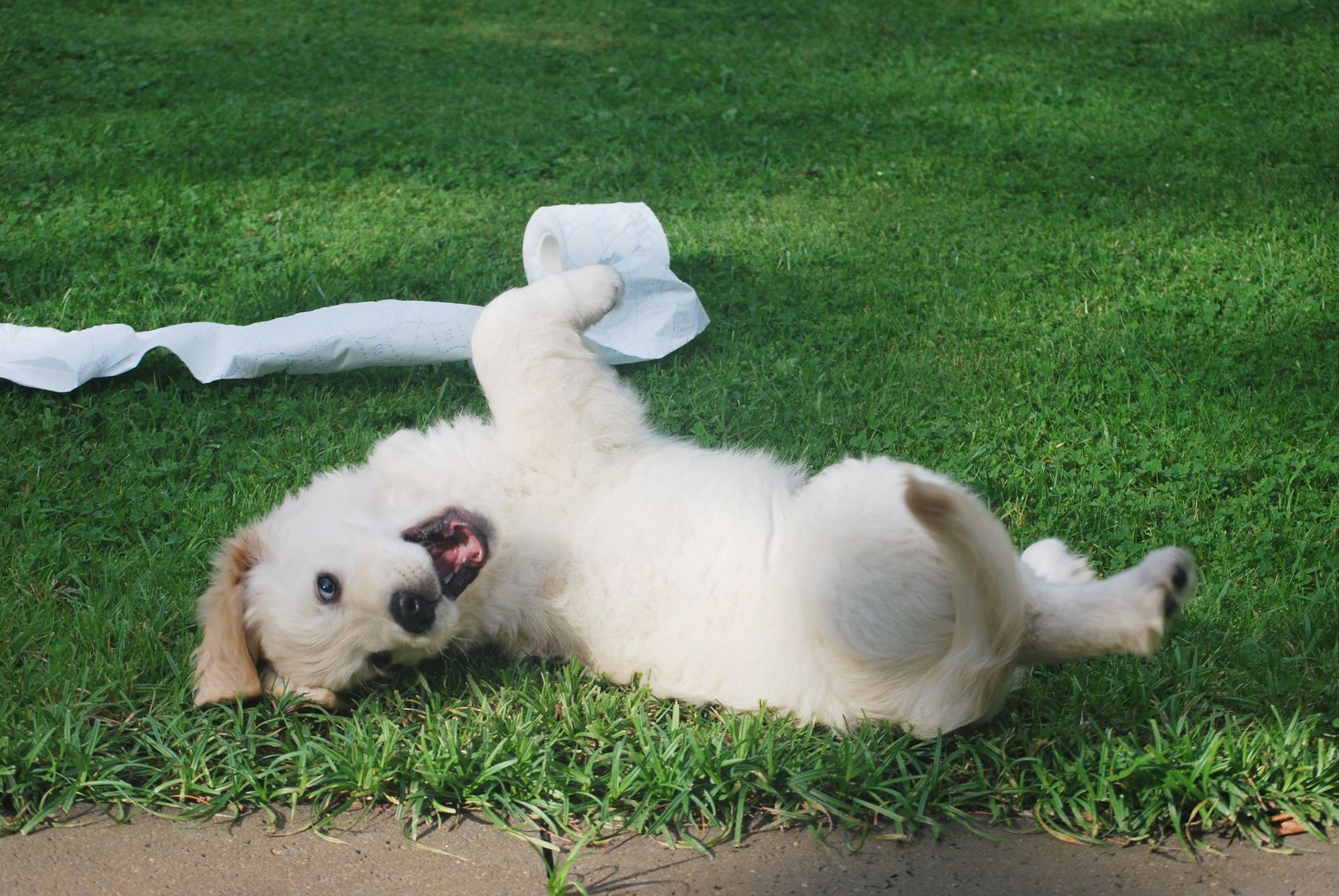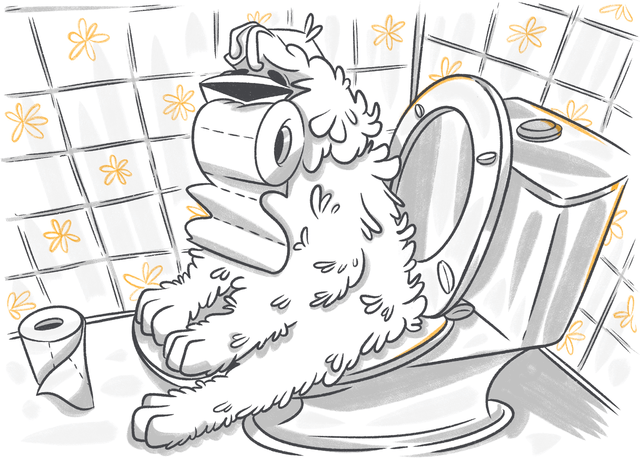It’s not every pet parent’s dream to take a good, hard look at their beloved pets’ poop, but paying attention to it is a smart plan if you want to catch any potential problems early on. Knowing what’s normal will help you figure out what’s not, such as shades of red, which could indicate blood, and mucus, which could indicate a wide variety of things.
Why don’t we take a look?
Stop Googling - Ask a Real Vet
Content:
- What Does Dog Poop with Blood and Mucus Look Like
- Causes of Dog Poop Like Jelly with Blood
- When is Dog Poop Like Jelly with Blood an Emergency
- FAQs
- Conclusion
What Does Dog Poop with Blood and Mucus Look Like
Although it might sound simple enough, dog poop with blood and mucus can come in many forms. Darker brown or black blood is often harder to spot and indicates older blood or blood from somewhere higher up in the waste system.
Bright red blood, on the other hand, is fresh blood. Constipation can cause this, as can benign tumors around the anal area. Diarrhea and frequent pooping are also culprits, so it’s worth checking your pet cam to see how often your pet is going outside to do their business.
Mucus can appear in several colors, too. Yellow or green mucus can be indicative of an infection. White, off-white and even pale-yellow tones can be signs of another infection. Without proper diagnostic testing, it’s impossible to know the cause.
Causes of Dog Poop Like Jelly with Blood
Blood and mucus in dog poop are symptoms rather than a medical condition, and they can have different causes. It’s important to take note of all other symptoms or unusual behavioral patterns that your pet displays. A full picture of symptoms helps point vets in the right testing direction, leading to quicker diagnosis and treatment.
Stress
Stress causes real physiological problems in dogs and other pets, just as it does in humans. Yawning.), pacing, excessive barking, crying, excessive shedding, changes to the eyes, and bowel and urine issues are typical symptoms of stress in dogs, including dog poop that looks like jelly with blood in it.
It’s not always easy to reduce the amount of stress your pup feels, but determining triggers is vital. Strangers at the door, separation anxiety, the sound of the doorbell, fireworks, arguing pet parents, loud music, and other things can cause your pet to feel stressed. You can minimize their discomfort by avoiding situations that trigger a stress reaction.
Foreign Body Ingestion
Has your playful pet eaten something they shouldn’t have recently? Maybe a kid’s toy, a hair clip, or even part of a bone? These things can all cause damage to the digestive and waste systems of your pet, which in turn can cause bleeding.
Blood location can indicate where damage is - vomiting with blood usually indicates a digestive issue, but blood mucus in dog stool can point towards a bowel or intestinal complaint.
Colitis
Colitis is the medical name for inflammation within the colon, specifically the large intestine. Stress can cause inflammation to develop, along with whipworms and other parasites, inflammatory bowel disease (IBD), food allergies, gut irritation, and bacterial or viral infections. The condition can go away by itself without treatment. This isn’t always the case. Treatment is necessary in recurrent and/or severe cases.
Symptoms of colitis in dogs can include:
- Vomiting;
- Difficulty defecating;
- Snapping or other unusual behavioral patterns (indicating pain);
- Foul-smelling feces;
- Feces with what looks like jelly and/or blood.
Rapid Dietary Changes

Changing a dog’s diet too quickly can result in several unwanted side effects, including your dog bleeding from the buttocks, mucus in stools, diarrhea, no interest in food or treats, low energy, and more.
Dietary changes to your pet’s food (cats and other pets as well as dogs) are often too much for their small and sensitive stomachs. A slow and steady transition is advised, with small changes made every two days.
Food Allergies/Reactions
A common cause of colitis, food allergies, or reactions can look different from dog to dog. They can also stem from different food items, but proteins are the most common irritants, according to VCA Animal Hospitals study.
Excessive scratching, no interest in play or treats, low energy or hyperactivity, diarrhea, bloody feces, jelly-like feces, vomiting, and weight loss are common symptoms of allergies overall, but the cause and severity will dictate which signs you’ll see.
Cancer or Tumors
Benign tumors can sometimes cause as much damage as cancerous or malignant ones. Dog poop with mucus and/or blood can be a sign of both, which is why it’s important to seek medical advice as soon as you notice it.
The following types of cancer are linked with bloody or jelly-like stools:
- Intestinal;
- Anal sac;
- Stomach;
- Bowel.
When is Dog Poop Like Jelly with Blood an Emergency
In reality, dog poop like jelly with blood is always an emergency. Without taking your pooch to the vet, it is impossible to know whether the cause is cancer, internal bleeding, or a food reaction, so not seeking medical care for your pet is like rolling the dice and hoping for the best.
If you have access to online assistance from licensed vets, you could always send them photos or a video and ask for their recommendations. That’s one part of the service with Petcube’s Emergency Fund. Another is the $3,000 of emergency medical coverage you get for just $29 per month. Peace of mind can come from as little as $1 per day.
FAQs
Are there any home remedies for dog poop that looks like bloody jelly?
You’ll need to determine the root cause of your dog’s bloody and jelly-like poop before you can start any course of treatment, holistic or otherwise. If the cause is allergies, avoiding the food that causes the reaction will stop its reoccurrence.
Why does my dog have bloody diarrhea but act normal?
Bloody diarrhea in dogs is a medical problem, whether your dog still acts normally or not. It could be the early signs of something much more serious or a mild complaint that requires swift treatment to resolve.
What does it mean when a dog has diarrhea with blood and vomiting?
Vomiting with bloody diarrhea is a medical emergency that requires urgent medical attention. One problem on its own wouldn’t likely be an urgent matter, but those problems together indicate the later stages of a serious condition or a serious condition that has come on swiftly.
Conclusion
Although it’s not a good idea to panic, it is a good idea to treat any kind of doggy bowel change as urgent. It’s a sign that something isn’t right, and without diagnosis and treatment, it could be any number of things causing your pet to become ill. It could also mean that your pet is in pain or discomfort, which is definitely something you don’t want.
Was this article helpful?
Help us make our articles even better









